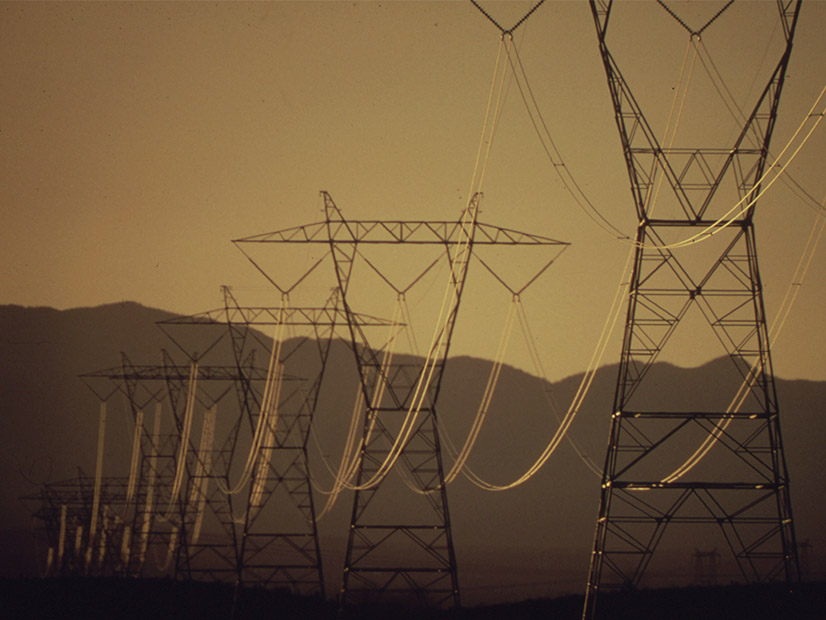A bill that proponents say will help Nevada “capture its place in the new energy economy” unanimously passed the state Senate Friday as the legislative session races toward the finish line.
Senate Bill 448, by Sen. Chris Brooks (D), was passed 21-0 after emerging from the Senate Committee on Growth and Infrastructure Wednesday night. The committee’s approval followed a nearly three-hour hearing on the bill on Monday.
Brooks introduced the wide-ranging energy bill on May 13, just weeks before the state’s 120-day legislative session ends on May 31.
SB448 seeks to boost the state’s transmission network, and sets a deadline of Jan. 1, 2030, for transmission providers in the state to join a regional transmission organization.
Another focus of the bill is transportation electrification. SB448 would provide for an initial investment by NV Energy of $100 million from 2022 to 2024 for a variety of electric vehicle charging programs.
The bill would also address energy storage by adding storage facilities and hybrid generation-and-storage facilities to the Renewable Energy Tax Abatement Program. The program currently gives tax breaks to renewable energy facilities.
Diversifying the Economy
Michael Brown, executive director of the Nevada Governor’s Office of Economic Development (GOED), spoke during Monday’s hearing, calling SB448 “landmark legislation” and urging its adoption.
“This is really an opportunity to help build and diversify the Nevada economy,” he said.
Brown said when a Midwest-based manufacturer met recently with GOED about potentially operating in the Silver State, the company’s first question was about renewable energy.
“They wanted to know how we were producing it, how it was transmitted, what the prices were,” Brown said. “That’s a game changer. We’ve not had that before.”
David Bobzien, director of the Governor’s Office on Energy, also spoke in support of SB448 on Monday.
Bobzien said the bill’s provision for an RTO in Nevada dovetails with recent discussions and studies on the topic. For example, in the Western Interconnection Regional Electricity Dialogue, or WIRED initiative, state officials and utility representatives are working together to develop recommendations on resource adequacy, transmission planning and greenhouse gas accounting. (See Group Hopes West Can be Wired for Collaboration.)
“So, the timing of this legislation couldn’t be better,” Bobzien said.
Streamlining Greenlink
SB448 seeks to streamline approval of NV Energy’s Greenlink North transmission project. In March, the Public Utilities Commission of Nevada approved construction of Greenlink West, a 525-kV transmission line that will run north-to-south along the western edge of the state. (See Regulators Greenlight NV Energy’s Greenlink West.)
Greenlink North would connect Greenlink West with the existing One Nevada line in the eastern part of the state, forming a transmission triangle.
PUCN approved the conceptual design, permitting and land acquisition for Greenlink North, but NV Energy must return for approval of construction. Under SB448, NV Energy would be required to file a plan for the Greenlink North project with PUCN by Sept. 1.
PUCN would be required to approve the project as long as NV Energy’s plan met criteria such as expanding transmission access to renewable energy zones and promoting economic development in the state. Greenlink North would then be in service by the end of 2028, under SB448.
Cost Concerns
Laura Granier, speaking on behalf of the Nevada Resort Association on Monday, said the group was concerned about the potential for the Greenlink projects to increase utility rates. Granier also described the timeline for the bill as “challenging.”
“We are 14 days from sine die and faced with major policy changes and a proposed directive for billions of dollars of utility expenditures that could lead to rate hikes and additional costs or surcharges for customers,” Granier said.
NV Energy CEO Doug Cannon said the company cannot recover its costs for the project until it is finished. Then, the company’s proposed cost recovery would be reviewed by PUCN in a public process.
“It’s not a risk-free proposition,” Cannon said. “We don’t know ultimately what the Public Utilities Commission will approve.”
Bringing more renewable energy online may ultimately reduce electric rates, proponents said. Brooks presented a slide showing that as NV Energy’s megawatts of renewable energy have increased, the cost to customers has decreased.
SB448 would also form a Regional Transmission Coordination Task Force to advise the governor and legislature on RTO-related matters. The committee would include members from utilities, gaming, labor, environmental groups, the solar and geothermal industries, and the state Assembly and Senate.
In response to suggestions during Monday’s hearing, Brooks filed an amendment to the bill that would add an assembly member and a senator from the minority party to the panel.
Before Friday’s passage by the full Senate, the bill was amended to include a provision requiring that 20% of expenditures in a proposed plan to accelerate the adoption of electric vehicles be devoted to incentives for behind-the-meter investments in EV charging infrastructure or stations.
Another amendment clarifies that both bundled retail customers and other eligible classes of customers will have non-discriminatory access to utility plans that provide investments and incentives for the deployment of EV charging infrastructure at single-family and multi-use dwellings and are also designed to serve historically underserved communities.




